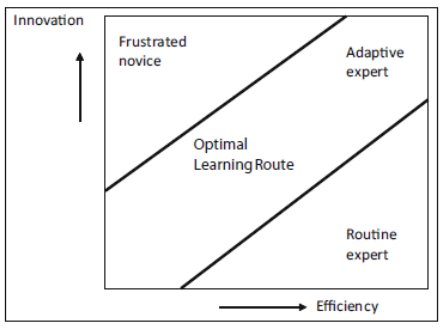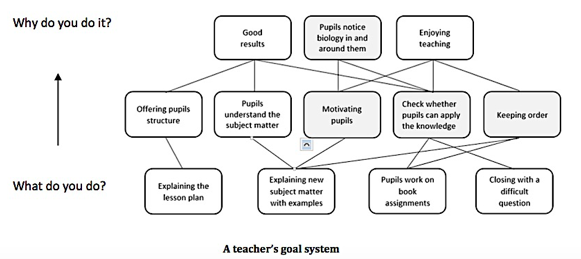Why
Expanding an educational repertoire is best done step by step, building on what you already are able to and want to do. This could prevent both frustration and boredom.
Designing a learning route starts by mapping out what you usually do and why you think to be important. This could be clearly and compactly displayed in a goal system.
A goal system can easily be constructed on the basis of an interview. A supervisor, f.i. the didactic counselor could interview the teacher, but it is also very instructive and insightful for the teacher to map out the goal system of his supervisor. For an interview you only need an A3 paper and a stack of post-it leaflets. The interview is as follows:

